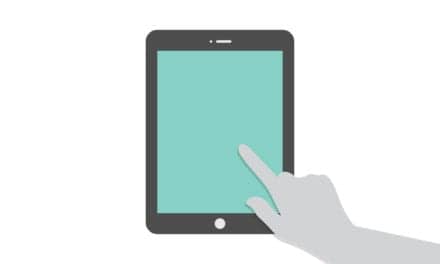National Physical Therapy Month comes every October, but this one is particularly meaningful to Helius Medical Technologies. This year, the company has trained a large and growing community of physical therapists to use its Portable Neuromodulation Stimulator (PoNS) device to help improve the gait of people with multiple sclerosis (MS). And given the critical role physical therapists play in PoNS Therapy, Helius is making its free, online training available to even more of them nationwide.
This effort – which gives physical therapists the opportunity to sign up for training by visiting the Helius booth at the American Congress of Rehabilitation Medicine Conference in November and the American Physical Therapy Association (APTA) Combined Sections Meeting in February 2023 – has a single goal: to give more individuals with MS the opportunity to better live the promise of APTA’s theme for NPTM’s 30th anniversary: “Choose to Move.”
The theme spotlights physical therapists’ unique value as movement experts – a role that makes them vital to the success of PoNS Therapy. PoNS is an innovative device that helps individuals with MS improve their gait by stimulating the surface of the tongue to activate new pathways to the brain. During the first two weeks of therapy, trained physical therapists work in-person with users, guiding them through therapeutic exercises designed to maximize the effectiveness of the device; for the following 12 weeks users continue the therapy at home, under their PT’s weekly guidance.
In a clinical trial, PoNS plus targeted physical therapy helped all the participants enrolled in the active treatment group achieve at least a 4-point improvement in their Dynamic Gait Index (DGI) scores.1 A second study suggests this combination can enhance motor performance and showed a statistically significant improvement in balance.2 Real-world treatment outcomes found that 58.3% of individuals with MS and gait deficit achieved at least a 4-point improvement in their functional gait assessment (FGA).3
“How well we can walk has a huge impact on how well we live our lives. And for people with MS, who often have to deal with so many other complications, it’s particularly top-of-mind,” said Antonella Favit-Van Pelt, M.D., Ph.D., Helius’ Chief Medical Officer. “When talking to their doctor, about 85% of them name gait deficit as their primary concern. Within 15 years of an MS diagnosis up to 50% of them will require a walking aid, and 10% will be wheelchair-dependent.”
The PoNS device is worn around the neck, with a mouthpiece that rests lightly on the front of the tongue. It works by delivering electrical impulses through nerve fibers on the tongue, stimulating the flow of millions of neural impulses to the brain structures that control gait. This creates a cascade of activity in the brain that, when combined with physical activity, provides a neuromodulatory effect, resulting in neuroplastic changes – essentially “rewiring” parts of the brain to improve gait. This video illustrates how PoNS works: https://youtu.be/9WhlnXcucmE
Physical therapists who complete Helius’s training learn how to complement use of the PoNS device with physical activity in order to elicit gait improvement. And while a significant number of them across multiple states already have been trained, they’re only the first wave. Additional physical therapists currently are going through training, and new ones are signing up. In doing so they’re exemplifying the spirit of both National Physical Therapy Month and “Choose to Move.”
[Source(s): Helius Medical Technologies Inc, GlobeNewswire]





